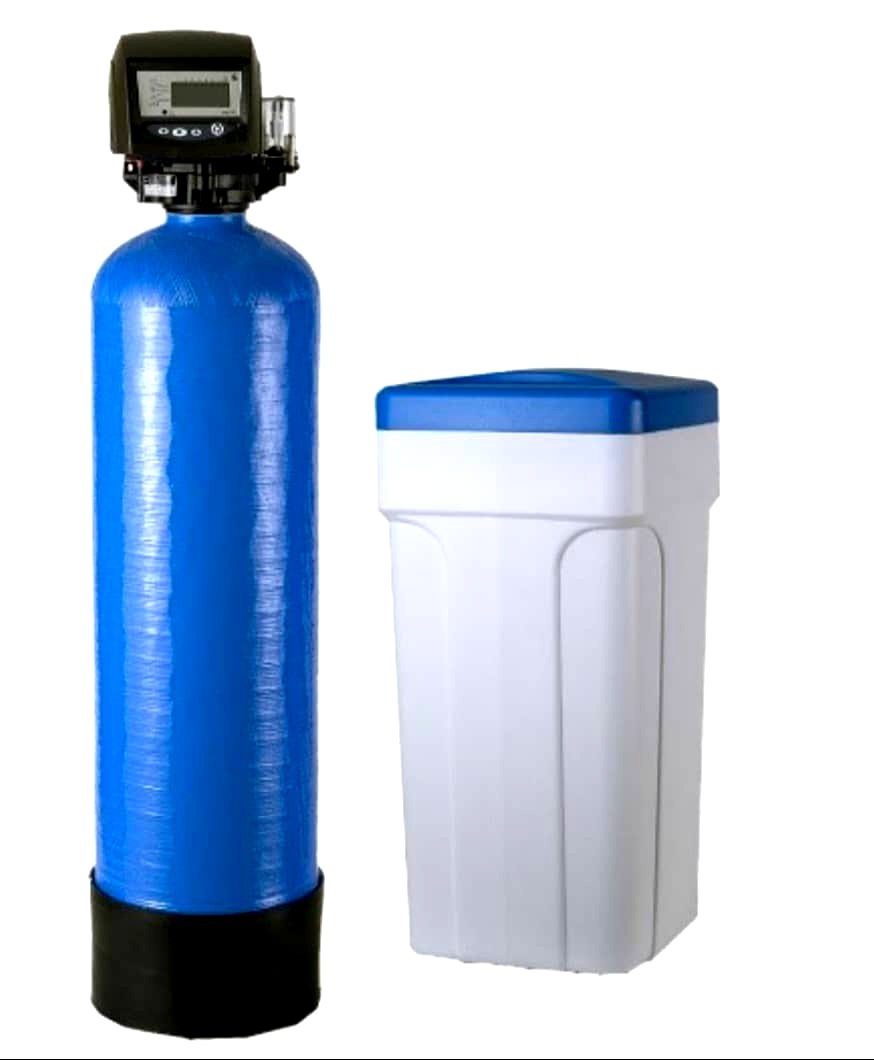water softener
Water softener is a device that passes hard water with solutes through the resin under pressure and the purified water and its lime are separated. This device is used to remove the hardness of all water including calcium, magnesium and some metal cations in hard water. In other words, by providing a favorable environment inside a pressurized metal (galvanized) or fiberglass (Frp) body, it provides the field for ion exchange. Water flow rate, desired water hardness and backwash time of sediment trap are effective factors in designing a resin trap with suitable capacity. Hardener types: Water has two types of temporary hardness and permanent hardness. In waters where water hardness is temporary, it can be fixed by boiling. But in waters with constant hardness. Methods other than heating should be used. The cause of sediment formation in heating and cooling devices such as packages, heat converters, steam boilers, cooling towers is the presence of calcium and magnesium ions in water, and the presence of this sediment It reduces the space inside the equipment connections and as a result reduces the water pressure in these devices. Reducing the water pressure is one of the main causes of damage to the devices, which causes all these problems and also causes serious damage to them, which can be solved to some extent by installing a water softener. The resin hardening device, in which ion exchange and reduction of calcium and magnesium is done with the help of resin, is the best type. Hardeners manufactured by this company are available in the following models: 1) Semi-automatic 2) Fully automatic The structure of the water resin hardening device Inside the hardener is silica and ion exchange resins, and its structure includes an inlet path, an output path, a salt water path, a washing discharge path, a recovery path, and a backwash path. Two valves, one at the top of the hardener and the other at the bottom, allow access to the inside of the resin hardener. The source of salt is located next to the hardener, which actually has the task of reviving the hardener. In the upper part of the main source of the hardener, there is a gauge that is responsible for calculating the pressure drop in the hardener. The largest water softening valve is called a solenoid valve, which changes the path of water in the softening pipes. Other hardening valves include air vent valve, inlet valve, outlet valve, salt line valve, drain valve in the backwash and wash drain valve. The advantages of using water resin hardening device: • Increasing the efficiency of home appliances and plumbing system • Reducing the cost of energy consumption • Reducing the consumption of hygiene products • Preventing the formation of white spots on clothes and surfaces • Maintaining the health and shine of the hair after bathing In order to increase the life of the package and protect it from any damage and corrosion, epoxy with a high thickness (at least 120 microns) is used (in metal body tanks). • Water dispenser system for uniform water distribution and increase efficiency • Resin bed with high ion exchange and fast regeneration and low pressure drop • Salt tank made of polyethylene and piping suitable for suctioning the solution


